【RocketNews24】How to survive an earthquake (or zombie outbreak): Expert advice and items to prepare
Posted by Michelle Lynn Dinh (Shimane-ken, Chibu-mura, 2010–13), editor and writer for RocketNews24. The following article was written by Philip Kendall (Fukushima-ken, Shirakawa-shi, 2006–11), senior editor and writer for RocketNews24, a Japan-based site dedicated to bringing fun and quirky news from Asia to English speaking audiences.
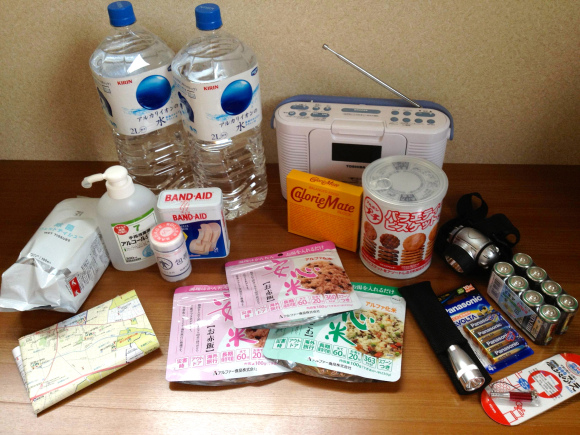
Anyone living in Japan for any length of time would be mad not to spend an hour throwing a bag together.
Being the most earthquake-prone country in the world, earthquake drills are as common in schools in Japan as fire drills are in the West. Knowledge of what to do and how to prepare for big quakes is essential, but many foreigners visiting or living in Japan are simply not used to larger tremors and have little or no idea how to respond should the earth start to rumble. Thankfully, even in Japan the chances of being hurt or killed in an earthquake are relatively slim, but it’s important to know what you can do to prepare. Combining our own first-hand experience with the expert advice of a seismologist from the California Institute of Technology, the following article not only discusses how best to respond in the event of an earthquake, but also lists the essential items that anyone living in Japan or any other earthquake-prone country should have stowed away in their earthquake preparedness kit.
Talking safety is never the most exciting subject, and no one’s asking you to go all Dwight Schrute and build a nuclear fallout shelter here, but it pays to be ready. And if the thought of tooling up in the name of earthquake preparedness fails to get your heart pumping, simply substitute the word “earthquake” for “zombie outbreak” and the process will become infinitely more fun.
Occasional inflammatory comment or not, we love you guys, and we want you to be safe should an earthquake hit while you’re in the land the majority of the RocketNews24 team calls home. Rather than rely solely on our own knowledge of Japan’s habit of going all wobbly, however, we sought some expert advice and turned to Dr. Kate Hutton, a staff seismologist at the California Institute of Technology’s Seismological Laboratory, for help.
RN24: As most people are aware, Japan has thousands of small earthquakes all year round that often go unnoticed, but what size of earthquake should we be concerned about?
Dr. Hutton: The potential for damage depends on many factors: magnitude, distance away from your site, soil conditions, type and quality of construction, special circumstances such as soil liquifaction, tsunami, fire potential, etc. In Japan and the western US, where earthquake-resistant building codes have existed for decades, we mostly worry about quakes larger than magnitude 6 or 6.5.
RN24: In the event of one of these larger earthquakes occurring, say, while we were at home watching TV, cooking or even sleeping, what would be the best course of action to take?
Dr. Hutton: A big part of earthquake preparedness happens before the earthquake. Both businesses and families need to be concerned about “securing their space”, so carrying out any necessary earthquake retrofits, securing bookcases and similar furniture and appliances, that kind of thing. Both also need supplies and a plan the keep the supplies up to date and how to deal with both the earthquake and the aftermath. Part of the plan should be what everyone is going to do when the earthquake hits: if they are at home, then sheltering under a table or other strong furniture would work, so loose items will not fall on them. It’s a bad idea to try to run unless the building might collapse, since people could fall and be injured.
RN24: And if you happen to be out and about when a quake hits?
Dr. Hutton: This involves a lot more situational awareness. Be aware of what might fall on you and get away from it. This includes pieces of buildings, power lines and the like.
RN24: Is there any truth to the old myth that the safest place to be during an earthquake is in an interior doorway?
Dr. Hutton: In a specific situation, which doesn’t exist much any more, an interior doorway made some sense. Unreinforced brick buildings used to shed their exterior walls, leaving the interior, non-structural walls supporting the rooms, so people who were in interior doorways survived. With other types of buildings, the mode of damage is not the same, however. Sturdy furniture provides more reliable protection – some people in doorways have even been trampled.
RN24: So we’ve taken shelter and the earthquake has died down. What should we do next?
Dr. Hutton: Check yourself and the people around you for injury and give basic first aid if you can. When it’s safe to do so, go to an outdoor area free of power lines and other hazards. Be aware of the possibility of secondary hazards, such as tsunami or fire.
RN24: Emergency preparedness kits have become very popular here in Japan since the events of March 11, 2011. What items would you say are absolutely essential, given that comparatively few people in Japan are car owners and may struggle to carry a large amount?
Dr. Hutton: What we usually tell people here in California is to be prepared for a week-long (or more) camping trip, self-sufficient with water, food, medications and other needed supplies. Stores will be closed and power and water may be off for some time. I think this is more than a small backpack. But some is better than none!
RN24: Finally, do you think we’ll ever see a day when science can accurately predict earthquakes?
Dr. Hutton: Earthquake prediction is probably far in the future, if it is even possible. Many seismologists believe that earthquake are inherently sudden phenomena, with no reliable warning. Others think that measurable precursors sometimes exist, but may not be reliable. Considering that false alarms could also cause chaos, it is a very difficult topic!
You heard the doctor – let’s get that preparedness pack ready!
Your earthquake kit
You might feel a bit silly doing it, but spending an hour or so one weekend preparing an earthquake kit will not only put your mind at ease but ensure that you and your family or friends will be as ready as you can be should an earthquake hit. After all, there’s no point wishing you’d made one as soon as the ground starts to rumble. And as Dr. Hutton quite rightly suggests, with enough damage chances are even the largest stores will either close or be cleaned out in no time at all.
The following is intended as a list of basic items that anyone living in Japan who may not have access to a vehicle (and thus would have to travel light if it they are required to leave their home) should prepare. It is enough to keep you going for a couple of days following a large-scale quake, but by no means an exhaustive list. You should always pack more when you can, but be sure to check the contents of your pack every few months and keep it stocked. If you find that some of your perishable supplies are about to expire, head out and get more before using them up. Once you’re restocked, you can spend the evening camping out in your living room eating the older stuff while playing The Last of Us or watching movies like 28 Days Later.
Your earthquake (or zombie!) pack should always include:
1. Bottled drinking water
Sizeable quakes can damage water mains, sometimes resulting in water being cut off completely or coming out dirty. You should always have enough water for each person in your household to last 2-3 days minimum. Sealed, bottled water does not go “bad”, and expiration dates printed on bottles usually refer to its “best before” date rather than whether it is safe or not, with the taste starting to change ever so slightly after the printed date has passed. Even so, consider replacing your older bottled water every year or two if it’s getting close to the date printed on the label.
2. Flashlight/torch/head lamp
If the power goes out, the last thing you’ll want to be doing is stumbling about in the dark, especially if the quake has thrown things about the room or broken any windows, crockery, glasses, etc. Headlamps can make even the coolest survivalist look like a total idiot, but they allow you to work hands-free, which is something of a god-send if you plan on cooking or don’t fancy the idea of going to the bathroom while holding a torch. They’re not 100-percent essential, but small “earthquake whistles” (bottom right) are sold at many supermarkets and department stores, so it may also be worth keeping one in your pack as a means of attracting attention should the need arise.
3. Portable radio for listening to news bulletins
TVs and smartphones can be absolute life-savers following large earthquakes as it’s important to pay attention to official news bulletins and government advice. But if the power is out your TV will be useless, and your smartphone will likely go the same way after a day or two of use, so a battery-powered portable radio is essential. Even a Homer Simpson shower radio will do, just so long as it works well and can pick up a signal. A map of the local area is also a good thing to have as, although you might be able to walk to your favourite pub or local convenience store with your eyes closed, when official bulletins advise moving to a certain school, park or public building being used as an evacuation or support centre you may need help finding it. You can usually pick a map up at your local town hall or information centre.
4. Replacement batteries
Your radio and flashlights need power, and with regular use their batteries will run out quickly. Make sure you have replacements for all of your battery-powered devices and that they’re the correct size. We all know how heartbreaking it can be to pick up your TV remote or Xbox controller and discover that the batteries are dead, but don’t be tempted to break into your emergency pack to play a few rounds of Halo with your buddy or you might regret it later.
5. Simple first aid supplies
Don’t go nuts here – if you’re not medically trained you’re not going to know what to do with suturing equipment or a defibrillator anyway – but a few things like plasters/band-aids, a roll of bandage (and safety pins) or gauze and some antiseptic wipes or hand sanitizer can be really useful. The latter can help with keeping clean until your water supply comes back on, too. Also be sure to pack a small supply of any prescription medicine and things like sanitary towels if required, but check that any medicine you store in your kit is both in date and out of reach of small kids, and replace it often.
6. Small supply of dried/canned food
The emergency food packs sold in most Japanese supermarkets these days look so delicious you could be forgiven for wanting to serve them up for dinner right away rather than add them to your earthquake kit, with things like canned fish in rich sauces, teriyaki chicken, chocolate cake, bread, and even curry and rice that can be eaten cold. Feel free to stock up but pay close attention to expiration dates and don’t overload yourself if you do not have access to a vehicle, and be sure to pack a can opener if you buy canned food.
Packs of flavoured rice can also be bought that can require only a little (cold) water, so if you’re not planning on packing a camping stove (see below) be sure to pick up foods that can be eaten without any prior cooking. If you don’t have access to any of these fancy products, items sold at outdoor and camping stores – such as CalorieMate (above) which, as its name implies, is packed full of energy – will last a long time in your kit and provide a surprising amount of sustenance for their size.
If possible, you might also consider including additional items such as:
– a simple camping stove with gas canister(s) for cooking
– additional toiletries
– Mylar or “space” blanket(s) for keeping warm
– simple waterproofs if you have to leave your home in inclement weather
– a little cash and forms of identification/passport
– a notepad and pen (and keep a list of important phone numbers/addresses in it because who remembers numbers any more!?)
Once your pack is ready and stored in a safe place, don’t forget about it. Check the expiration of food products, medicine, etc and replace it as necessary before it expires, but don’t pick it at every time you run low on household items. Most, if not all, of the basic items listed above will fit easily into a medium-sized backpack or bag. Keep your kit in a cool, dry place that is known to everyone in your group and easily accessible.
The chances that you’ll have to use any of the items in your earthquake kit are incredibly slim, but anyone living in Japan for any length of time would be mad not to spend an hour throwing a bag together, so make some time this weekend, go shopping and get your own kit ready! Oh, and if you’ve been replacing the word “earthquake” with “zombie outbreak” all the way through this article, you might want to throw in some nails, two-by-fours, a firearm or two and a cricket bat. Stay safe, Rocketeers!
Special thanks to Shang-Lin Chen and Dr. Kate Hutton at the California Institute of Technology for all of their help, advice, and answering our noob questions during the writing of this article. For more information about earthquake preparedness, check out the Earthquake Country website or visit your town office.
Related articles from RocketNews24:
- Japanese blogger discovers the real reason people camped out for the iPhone 5S launch
- Things only introverts will understand: Japan edition
- Hello Kitty look-alike caterpillar is easily the cutest larva we’ve ever seen
- Hiragana art: Creating pictures using the Japanese syllabary
- Flipping classrooms: Is Japan on the verge of embracing a new educational paradigm?
Are you a writer? RocketNews24 English is hiring!

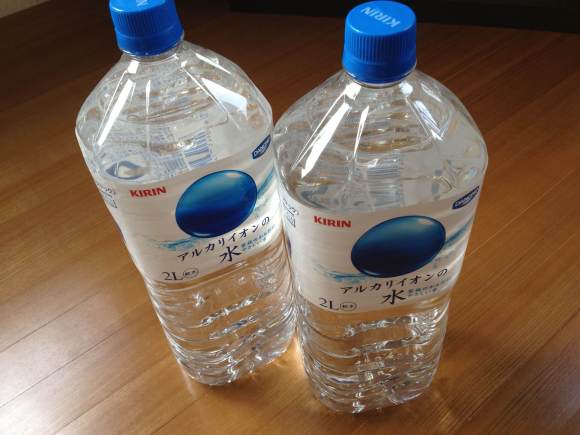
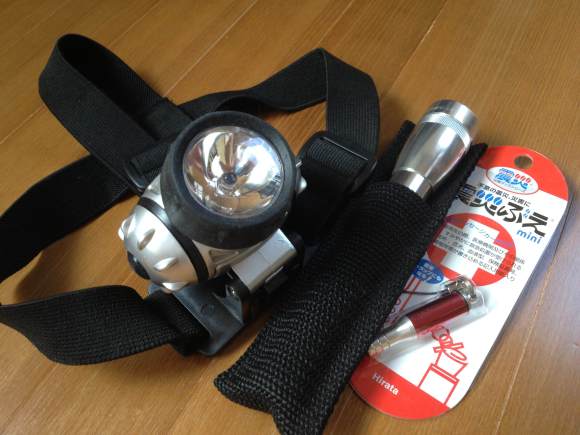
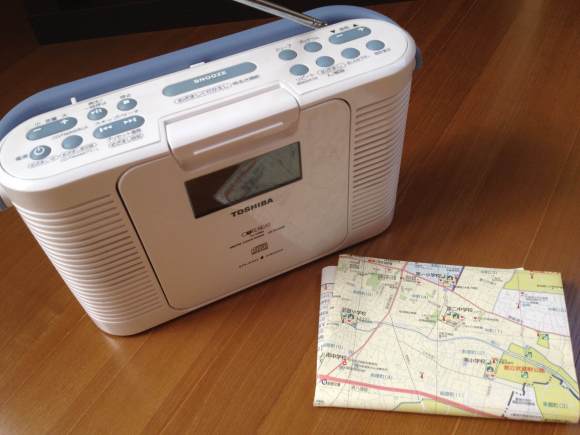
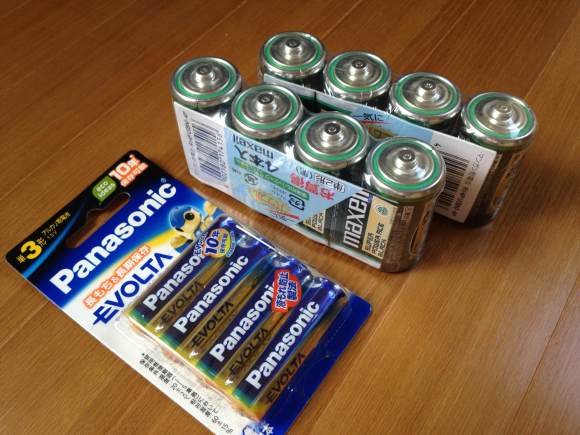
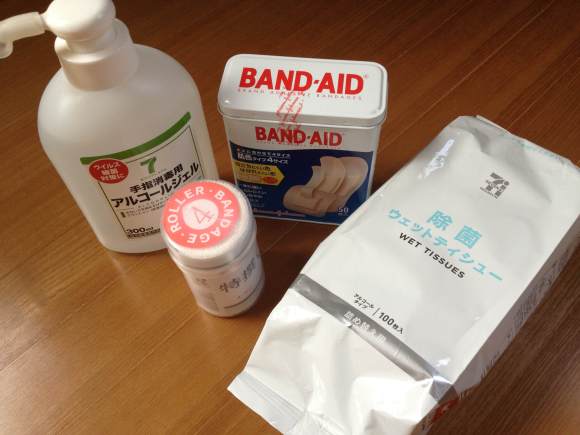
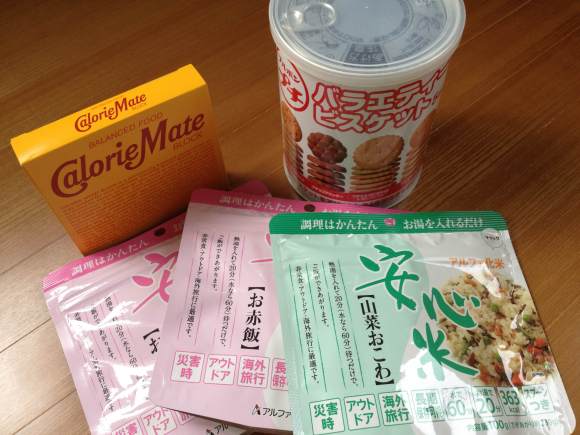

Comments are closed.